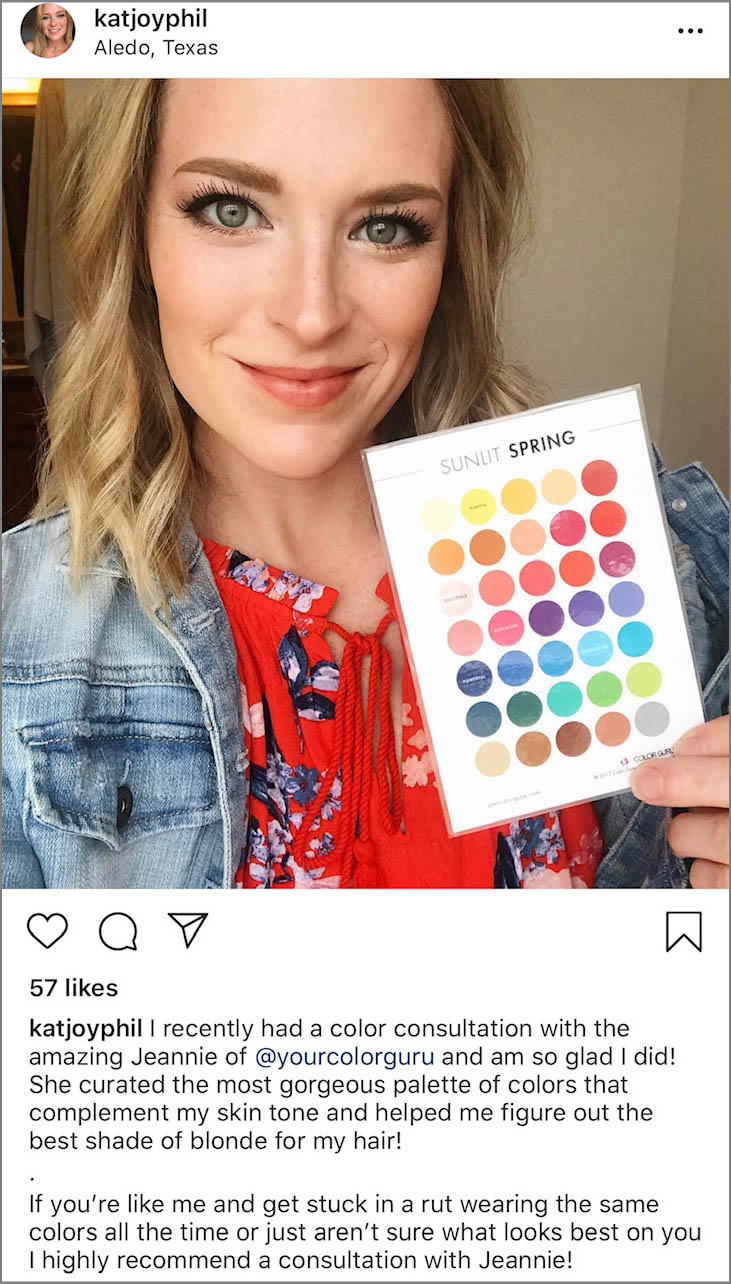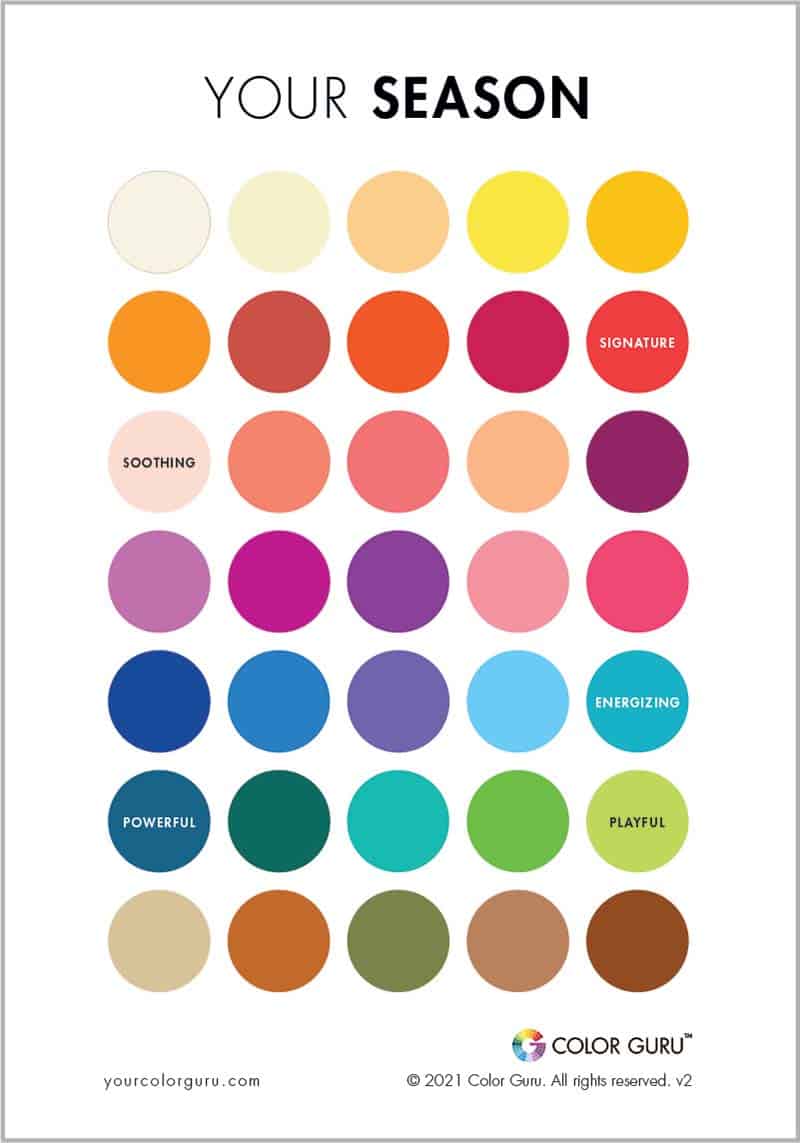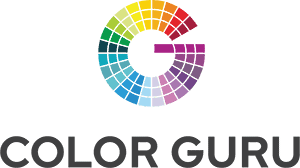Seasonal Outfit Planning: Expert Tips and Color Analysis for Every Season

At Color Guru, we understand that effective outfit planning is a crucial element of personal style and confidence. By utilizing our color analysis techniques, you can create cohesive and flattering outfits that enhance your natural features and express your unique personality. Understanding your color palette, whether it’s warm, cool, or neutral, allows you to make informed decisions about which clothing and accessories will best compliment your appearance. This knowledge not only simplifies the process of getting dressed but also ensures that every outfit you wear reflects your personal style and makes you feel your best.
Outfit planning involves more than just choosing clothes; it’s about creating a versatile wardrobe that works for various occasions and seasons. By identifying key pieces that align with your color palette, you can mix and match items to create multiple stylish looks. From casual wear to professional attire and formal evening wear, having a well-planned wardrobe means you’re always prepared, no matter the event. Additionally, incorporating seasonal trends and accessories thoughtfully can keep your style fresh and current. At Color Guru, our goal is to help you develop a wardrobe that not only looks great but also makes you feel confident and authentic in every situation.
Importance of Outfit Planning
Outfit planning is an essential aspect of developing a cohesive and stylish wardrobe that reflects your personal fashion goals and enhances your overall appearance. Understanding individual style preferences is the first step in aligning your outfits with your unique fashion identity. At Color Guru, we believe that the role of outfit planning extends beyond mere aesthetics; it’s about expressing your personality through your clothing choices. By carefully planning your outfits, you can ensure that each ensemble resonates with your style, helping you present a polished and consistent image.
Enhancing Personal Style
Understanding individual style preferences is crucial in creating a wardrobe that truly represents you. Whether you prefer classic, bohemian, modern, or eclectic styles, identifying these preferences allows you to align your outfits with your personal fashion goals. Outfit planning helps you strategically choose pieces that not only match your style but also work together seamlessly, creating a wardrobe that feels cohesive and intentional. This thoughtful approach to outfit planning plays a significant role in expressing your personality, allowing you to showcase your unique taste and flair through your clothing choices.
Boosting Confidence
Well-planned outfits have a profound psychological impact, boosting confidence and improving self-esteem. When your clothing choices are coordinated and reflect your personal style, it contributes to a sense of self-assurance and empowerment. Dressing for success is not just about looking good; it’s about feeling good in what you wear. By taking the time to plan your outfits, you can ensure that each day you step out feeling confident and prepared, knowing that your appearance reflects your best self. This practice of dressing with intention fosters personal empowerment and helps you navigate your day with confidence.
Color Analysis in Outfit Planning
Determining Your Color Palette
A fundamental component of outfit planning at Color Guru is determining your color palette. This process involves identifying whether your undertones are warm, cool, or neutral, and further categorizing them into seasonal palettes such as Spring, Summer, Autumn, or Winter. Knowing your color palette provides a framework for selecting clothing and accessories that enhance your natural features. The benefits of understanding your color palette are extensive, from simplifying shopping to ensuring that your wardrobe consistently flatters your complexion.
Coordinating Colors
Effective outfit planning leverages the principles of color theory, using complementary and analogous color schemes to create visually appealing ensembles. By understanding how colors interact, you can mix and match pieces in a way that is harmonious and flattering. Tips for mixing and matching colors include starting with a base color from your palette and adding accents that complement it, ensuring a balanced and cohesive look. Using color theory in your outfit planning not only enhances your appearance but also adds a level of sophistication to your style.
Building a Versatile Wardrobe
Essentials for a Functional Wardrobe
Building a versatile wardrobe starts with investing in quality staples and must-have basics that form the foundation of your closet. These essentials include items like well-fitting jeans, neutral tops, a classic blazer, and versatile dresses. Creating a capsule wardrobe involves selecting pieces that can be easily mixed and matched, allowing for maximum outfit combinations with minimal items. This approach not only simplifies your wardrobe but also ensures that you always have a functional and stylish outfit ready for any occasion.
Mixing and Matching Pieces
To maximize the potential of your wardrobe, strategic mixing and matching of pieces is key. Layering techniques for different seasons allow you to adapt your outfits to changing weather while maintaining style consistency. Transitioning outfits from day to night can be as simple as changing accessories or adding a statement piece, making it easy to adapt your look for various occasions. By mastering the art of mixing and matching, you can create numerous stylish outfits from a limited number of pieces.
Planning Outfits for Different Occasions
Casual Wear
Casual wear should prioritize comfort without sacrificing style. Key elements of casual outfits include comfortable yet stylish pieces like jeans, t-shirts, and casual dresses. Incorporating accessories such as scarves, hats, and casual jewelry can elevate your casual looks, adding a personal touch and making your everyday outfits more polished.
Work and Professional Attire
For the work environment, it’s important to balance style and professionalism. Essentials for a professional wardrobe include tailored suits, blouses, and pencil skirts. Choosing office-appropriate outfits involves selecting pieces that are both stylish and suitable for the workplace. Tips for maintaining this balance include opting for neutral colors and classic cuts, which convey professionalism while allowing room for personal style through accessories and subtle details.
Formal and Evening Wear
Formal and evening wear requires thoughtful selection to ensure you’re appropriately dressed for the occasion. This involves choosing elegant and sophisticated pieces, such as evening gowns, cocktail dresses, and tailored suits. Coordinating accessories, such as statement necklaces or elegant clutches, can enhance your formal look. Dressing for different types of formal occasions, from black-tie events to cocktail parties, involves understanding the dress code and selecting outfits that make a statement while adhering to the expected level of formality.
Seasonal Outfit Planning
Spring Outfit Ideas
Characteristics of Spring Palettes
Spring color palettes are characterized by their fresh, vibrant, and light hues. These palettes often include pastels such as baby blue, mint green, soft pink, and lavender. Bright and warm colors like coral, peach, and sunny yellow are also prevalent. These colors reflect the blooming flowers and longer daylight hours, creating a cheerful and uplifting mood.
Essential Pieces for Spring Wardrobes
Key pieces for a spring wardrobe include lightweight jackets, cardigans, floral dresses, and versatile skirts. Trench coats are perfect for unpredictable spring weather, offering both style and functionality. Pair these with light sweaters or blouses in complementary colors to create a cohesive look. Denim jackets and white jeans are also staples, providing a fresh and casual aesthetic.
Tips for Layering in Spring
Layering in spring is all about balancing warmth and comfort. Start with a lightweight base layer, such as a cotton or silk blouse, and add a mid-layer like a cardigan or light sweater. Finish with an outer layer like a trench coat or denim jacket. Scarves and light shawls can add warmth without bulk. Choose breathable fabrics to maintain comfort as temperatures fluctuate.
Summer Outfit Ideas
Features of Summer Color Palettes
Summer palettes are defined by their cool and soft tones. Think of ocean blues, soft greens, and gentle pinks. Light and airy colors like white, beige, and light grey are also prominent, creating a serene and cool appearance suitable for hot weather. These colors are inspired by the beach, clear skies, and lush greenery.
Lightweight and Breathable Fabrics
Summer outfits should focus on lightweight and breathable fabrics to keep cool. Fabrics such as cotton, linen, and chambray are excellent choices as they allow air to circulate and absorb moisture. Avoid synthetic materials that can trap heat and cause discomfort. Opt for loose-fitting garments to enhance airflow and ensure comfort.
Creating Stylish and Comfortable Summer Looks
To achieve stylish and comfortable summer looks, prioritize simple and functional pieces. Sundresses, shorts, tank tops, and maxi dresses are essential. Pair these with comfortable sandals or espadrilles. Accessories like wide-brimmed hats, sunglasses, and lightweight scarves can add style while providing protection from the sun. Choose outfits that can transition easily from day to night with minimal changes.
Autumn Outfit Ideas
Identifying Autumn Color Palettes
Autumn palettes are rich, warm, and earthy. Colors like burnt orange, mustard yellow, deep red, olive green, and chocolate brown dominate. These hues reflect the changing leaves and the overall warmth of the season. Autumn palettes often have a muted and cozy feel, ideal for creating inviting and stylish outfits.
Incorporating Warm and Rich Tones
To incorporate warm and rich tones into your autumn wardrobe, focus on pieces like chunky knit sweaters, corduroy pants, and wool skirts. Layer with flannel shirts or plaid patterns to add texture and interest. Deep-toned outerwear, such as a burgundy or navy coat, can be both functional and fashionable. Accessories like scarves, hats, and gloves in autumn colors can enhance your look.
Tips for Layering in Autumn
Layering in autumn is essential for adapting to varying temperatures. Start with a thermal or long-sleeve top, add a mid-layer such as a sweater or flannel shirt, and top with a coat or jacket. Consider materials like wool and cashmere for warmth. Layering allows for flexibility; you can add or remove pieces as needed throughout the day.
Winter Outfit Ideas
Traits of Winter Palettes
Winter color palettes are cool, bold, and dramatic. Colors include deep jewel tones like emerald green, royal blue, and amethyst purple. Neutrals such as black, grey, and white also feature prominently. These colors are inspired by the stark contrasts of winter landscapes and the festive season, creating a striking and elegant appearance.
Selecting Warm and Stylish Winter Pieces
For winter wardrobes, focus on pieces that provide warmth without sacrificing style. Essential items include wool coats, down jackets, thermal layers, and knit sweaters. Invest in high-quality outerwear that can withstand harsh weather. Pair these with warm accessories like knit hats, gloves, and scarves. Choose boots that are both stylish and functional, providing insulation and traction.
Balancing Functionality and Fashion in Winter
Balancing functionality and fashion in winter requires selecting pieces that offer protection from the cold while maintaining a chic appearance. Look for insulated and waterproof fabrics. Layering is crucial; start with thermal underwear, add a sweater, and finish with a heavy coat. Use accessories to add personality and color to your outfit, ensuring they complement your overall look.
Accessories and Outfit Planning
Matching Accessories with Outfits
Selecting Accessories Based on Color Analysis
Using seasonal color analysis, select accessories that complement your skin tone and enhance your overall look. Warm-toned individuals may opt for gold jewelry, while cool-toned individuals might prefer silver. Choose scarves, hats, and bags that match or contrast your outfit in a harmonious way.
Balancing Statement Pieces and Subtle Accents
Balance is key when accessorizing. If your outfit is bold and colorful, opt for subtle accessories to avoid overwhelming your look. Conversely, if your outfit is simple, use statement pieces like chunky necklaces or vibrant scarves to add interest. Ensure that your accessories enhance rather than detract from your outfit.
Tips for Accessorizing Different Outfits
Accessorizing effectively can transform an outfit. For casual looks, consider simple and practical accessories like a leather belt or a crossbody bag. For formal attire, choose elegant pieces such as pearl earrings or a silk scarf. Always consider the occasion and ensure that your accessories are appropriate and enhance your overall style.
Seasonal Accessories
Essential Accessories for Each Season
Each season requires different accessories. In spring, lightweight scarves, floral headbands, and pastel-colored bags are ideal. Summer calls for wide-brimmed hats, sunglasses, and beach totes. Autumn is perfect for woolen hats, leather gloves, and plaid scarves. In winter, opt for knit hats, insulated gloves, and cozy wraps.
Incorporating Seasonal Trends
Stay updated with seasonal trends to keep your wardrobe fresh. This might include trying out the latest styles in hats, experimenting with new color palettes for scarves, or incorporating trendy materials for bags. Adapting these trends to your personal style ensures that you remain fashionable while staying true to your preferences.
Tips for Maintaining a Cohesive Look
To maintain a cohesive look, ensure that your accessories complement your overall outfit. This involves matching colors, styles, and themes. For example, if you’re wearing a bohemian dress, choose accessories with a similar vibe, like beaded jewelry or fringe bags. Consistency in style and color creates a polished and harmonious appearance.
Practical Tips for Effective Outfit Planning
Organizing Your Wardrobe
Strategies for Wardrobe Organization
A well-organized wardrobe is crucial for effective outfit planning. Start by decluttering and categorizing your clothes by season and type. Use storage solutions like shelves, bins, and hangers to keep everything accessible and visible. Consider color-coding your wardrobe to make it easier to put together outfits.
Benefits of a Well-Organized Closet
An organized closet saves time and reduces stress when choosing outfits. It allows you to see all your options at a glance, making it easier to mix and match pieces. It also helps in identifying gaps in your wardrobe, ensuring that you have all the essentials for each season.
Tools and Systems for Wardrobe Management
Several tools and systems can aid in wardrobe management. Apps like Closet+ or Stylebook help you catalog your wardrobe and plan outfits. Physical tools like garment racks, drawer dividers, and shoe organizers can keep everything in order. Regularly updating and maintaining your wardrobe ensures it remains functional and organized.
Planning Outfits in Advance
Benefits of Pre-Planning Outfits
Pre-planning outfits can save time and ensure you always look your best. It allows you to consider different combinations and accessorize appropriately. Planning also helps in preparing for various occasions, ensuring you have suitable outfits ready.
Tools and Apps for Outfit Planning
Many apps are available for outfit planning, such as Cladwell or Pureple, which allow you to create digital versions of your wardrobe and plan outfits. These tools can suggest combinations based on weather, occasion, and personal style, making outfit planning easier and more efficient.
Creating a Weekly Outfit Plan
Creating a weekly outfit plan involves selecting outfits for each day based on your schedule and the weather forecast. Lay out or photograph your planned outfits to make mornings less hectic. This practice ensures you are prepared for the week ahead, reducing last-minute outfit stress.
Shopping for Your Wardrobe
Smart Shopping Tips for Building a Cohesive Wardrobe
Building a cohesive wardrobe requires strategic shopping. Focus on versatile pieces that can be mixed and matched. Invest in high-quality basics that will last multiple seasons. Avoid impulse buys and stick to items that fit your style and color palette.
Investing in Versatile and Timeless Pieces
Timeless pieces such as a well-fitted blazer, a little black dress, and classic denim are worth investing in. These items can be styled in various ways and remain fashionable over time. Versatility ensures that you get the most out of your wardrobe.
Avoiding Common Shopping Mistakes
Common shopping mistakes include buying trends that don’t suit your style, ignoring fit and comfort, and overloading on sale items that you don’t need. Always try on clothes before purchasing and consider how they will integrate with your existing wardrobe. Focus on quality over quantity.
Experimenting with Style
Trying New Trends
Incorporating Trends into Your Wardrobe
Incorporating trends into your wardrobe can keep your style current and exciting. Start with one or two trendy pieces and mix them with your classic items. This approach ensures that you stay fashionable without completely overhauling your wardrobe.
Balancing Trends with Classic Pieces
Balance is key when trying new trends. Pair trendy items with classic, timeless pieces to create a balanced look. This ensures that your outfit remains stylish and wearable. For example, match a trendy blouse with classic trousers or a statement accessory with a simple dress.
Evaluating Which Trends Suit Your Style
Not all trends will suit everyone. Evaluate new trends based on your personal style, body type, and comfort. Choose trends that enhance your look and feel authentic to your style. This ensures that you remain confident and comfortable in your outfits.
How To Get Started With Our Custom Color Palette Service
Are you ready to unlock your style potential and radiate confidence like never before? Getting started with Custom Color Palette is a breeze. Begin by exploring our range of tailored packages.
Whether you’re aiming for a complete wardrobe makeover or seeking makeup guidance, we have the perfect package for you. Once you’ve found your match, simply add it to your cart and proceed to checkout on our secure platform.
If you have questions or specific preferences, don’t hesitate to reach out to our friendly Color Guru team during our business hours from 9AM to 5PM EDT. We’re here to assist you every step of the way.
Once you’ve made your selection, sit back, relax, and let our experts work their magic in creating your personalized color palette. Embrace your newfound style with confidence, knowing that your unique personality will shine through the power of colors. Your style journey begins here, so take the plunge and let Color Guru be your guide to a more vibrant and confident you.

A color card is your cheat sheet for enhancing your personality, and are based on your unique hair, skin, and eye color. Just match the colors on the card with the clothing in the store, and voila! You know that you’re choosing a wonderful color for you.
Here’s Kat (Sunlit Spring) with her color card.
If you’re looking for an easy way to look better, shop smarter, and create a coordinated wardrobe, there is no smarter approach than simply discovering your best colors!



